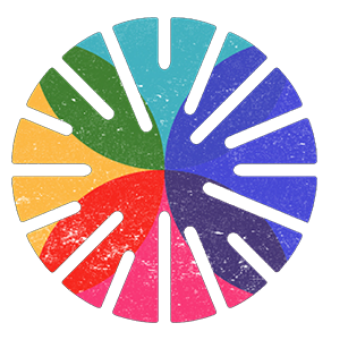Building upon the foundational insights from The History of Colors, Symbols, and Social Signals, this article explores how these visual elements actively influence and reflect cultural identities across different eras. Understanding this evolution helps us appreciate how societies communicate their values, beliefs, and shared histories through symbolic language.
- The Role of Colors and Symbols in Shaping Cultural Identity
- Cultural Symbolism and the Transformation of Identity Over Time
- Visual Language and Intergenerational Transmission of Cultural Values
- Non-Obvious Influences on Cultural Identity Through Colors and Symbols
- The Dynamic Relationship Between Personal Identity and Cultural Symbols
- Connecting Back to the Parent Theme: The Evolution of Visual Languages in Society
The Role of Colors and Symbols in Shaping Cultural Identity
Colors and symbols become emblematic of cultural groups through a complex interplay of historical significance, societal adoption, and collective agreement. For instance, the color red in Chinese culture symbolizes luck and prosperity, rooted in ancient traditions and reinforced through festivals, art, and architecture. Similarly, the lotus flower in Egyptian symbolism represents rebirth and purity, deeply integrated into religious iconography and funerary art.
The process of symbol evolution often involves societal shifts—be it political upheavals, religious transformations, or technological advances—that reinterpret or redefine meanings. Take the white dove as a symbol of peace; historically tied to religious and cultural contexts, its modern usage has expanded globally, sometimes taking on new connotations in different societies.
Historical events and collective memories significantly influence symbolic meanings. The purple color, once reserved for royalty due to its rarity, now symbolizes luxury and power universally, yet its original association remains embedded in cultural consciousness. This layered history emphasizes how symbols are not static but evolve with societal memory.
Cultural Symbolism and the Transformation of Identity Over Time
Periods of social upheaval or political change often catalyze the redefinition of cultural symbols. During the French Revolution, the Phrygian cap, once a common headwear, was transformed into a revolutionary symbol of liberty and resistance. Such reappropriations demonstrate how symbols can be repurposed to reflect new societal ideals.
Globalization exerts a profound influence by blending traditional meanings and introducing hybrid interpretations. For example, the rainbow flag, originally a symbol of diversity for the LGBTQ+ community, has gained international recognition, often interpreted differently depending on cultural context, thus reshaping its symbolic significance.
This reinterpretation allows societies to reevaluate their cultural identities. As symbols adapt, they foster a dynamic dialogue between tradition and modernity, encouraging communities to redefine their collective sense of self in response to changing values and external influences.
Visual Language and Intergenerational Transmission of Cultural Values
Colors and symbols are transmitted across generations primarily through rituals, costumes, and artifacts. For example, the use of kente cloth in Ghanaian culture, with its intricate patterns and colors, conveys social status, history, and values, playing a vital role in ceremonies and everyday life.
Rituals such as weddings, religious ceremonies, and national celebrations serve as platforms for reinforcing symbolic meanings. The wearing of specific colors or symbols during these events ensures their continued relevance and understanding among community members.
Younger generations often reinterpret symbols, blending traditional meanings with contemporary influences. This process can lead to new cultural expressions—such as modern fashion incorporating traditional motifs—thus maintaining cultural continuity while allowing adaptation to current contexts.
Non-Obvious Influences on Cultural Identity Through Colors and Symbols
Subconscious associations with colors significantly shape perceptions and biases. Research shows that blue often evokes trust and calmness, influencing branding and social interactions unconsciously. Conversely, black can symbolize authority but also mourning, depending on cultural norms.
Symbols function as tools of social cohesion or division. For instance, national flags foster unity within a country but can also exclude minority groups if their cultural symbols are marginalized or misunderstood.
External influences, such as media and technology, continuously transform traditional symbolism. The widespread use of emojis—visual symbols representing emotions—has created a new universal language that often transcends cultural boundaries, but also introduces new interpretations and debates about meaning.
The Dynamic Relationship Between Personal Identity and Cultural Symbols
Individuals often select colors and symbols that resonate with their personal and cultural identities. For example, a person from a particular region may wear traditional clothing or adorn themselves with symbols that express their heritage, reinforcing a sense of belonging.
Multicultural societies see reinterpretations of traditional symbols, blending multiple identities. A notable example is the reinterpretation of the yin-yang symbol in Western contexts, where it is often associated with balance and wellness, diverging from its traditional Taoist roots.
Conflicting symbolisms in diverse societies require negotiation—where personal and collective identities interact, sometimes harmoniously, sometimes contentiously. Recognizing these dynamics helps foster greater cultural understanding and respect.
Connecting Back to the Parent Theme: The Evolution of Visual Languages in Society
An understanding of the historical development of colors and symbols enriches our view of contemporary cultural expressions. For example, fashion trends often revive traditional motifs, embedding historical symbolism into modern aesthetics, thus extending their cultural narrative.
Modern reinterpretations continue the evolutionary story—such as the adoption of indigenous patterns in global streetwear—highlighting how traditional symbols adapt to new contexts while preserving their essence.
Studying this evolution enhances our appreciation for cultural diversity and shared human heritage. It reminds us that visual languages are living entities, constantly reshaping themselves as societies evolve and interact.
"Colors and symbols are not mere decorations but vital carriers of our collective history, identity, and values—constantly evolving but forever rooted in human experience."

